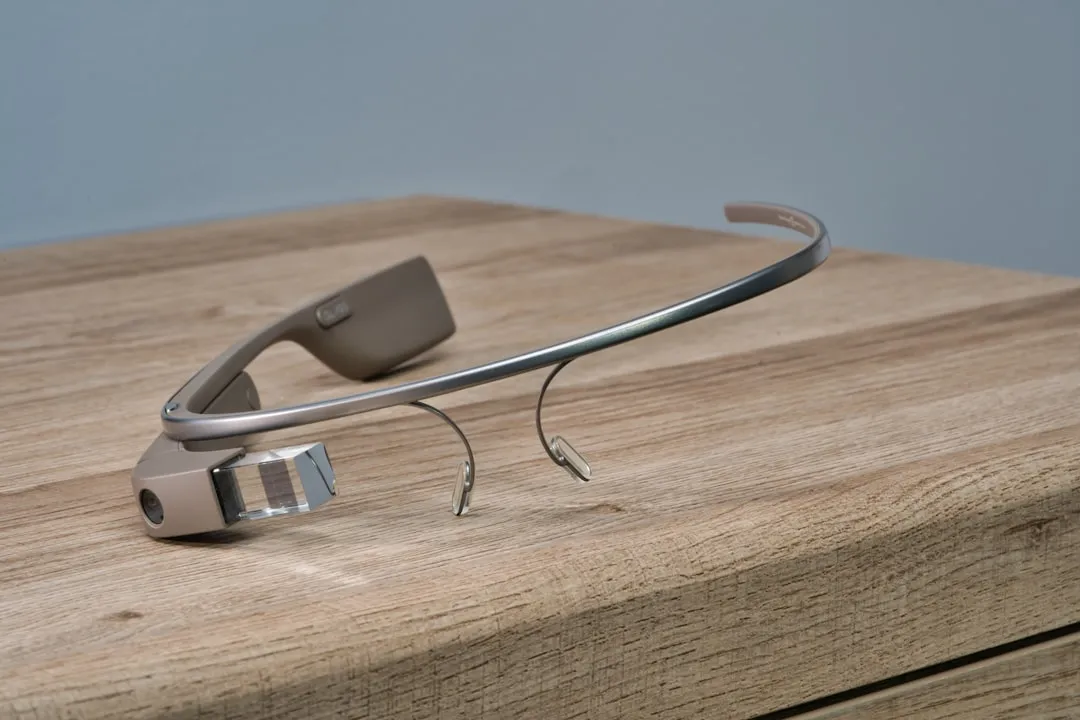If you've ever spent any serious time examining the Chinese tech startup world, you know that it moves fast — very fast. The tech startups hailing from Beijing and Shenzhen are moving so fast that they're now in serious competition with Silicon Valley.
The latest would-be competitor challenging Northern California's tech dominance, Beijing-based Nreal, is focused on augmented reality and has, in just a couple of years, made huge leaps toward taking AR mainstream. Nreal's founder and CEO, Xu Chi, a former engineer at Magic Leap, thinks he has the product that will normalize AR's migration from smartphone screen to a pair of wearables before Apple gets its rumored AR product off the launch pad.
Recently, after testing the Nreal Light product out, I had a chance to talk to Xu at length about the product's strengths and weaknesses, what the company's roadmap looks like, and how he views the state of the AR industry in the wake of constant change and cutting edge innovation.
Although the Nreal Light isn't available yet (it's slated for release later this year), Xu offers some interesting insights on what consumers can expect.
Next Reality: When I first met you about a year ago, the device Nreal was showing was very different and primarily showed off a video display rather than fully immersive augmented reality as the Nreal Light does. Can you explain how you iterated your way to the new product so quickly?
Xu Chi: Actually, we were showcasing three different designs then. Those were still very early prototypes, so the other features were not there yet, and that was actually our first appearance. For CES this year, we had the Nreal Light, that will be officially available, and that product is actually a lot more mature. We've just been iterating and testing, and we actually ended up having seven iterations from the generation-one product during the past few years. We were working on optics, the SLAM camera, the algorithm, and the other stuff; we actually iterated a lot to get to the very stable current generation [Nreal Light].
Next Reality: The version we saw at CES had a hip-mounted computer, but the version you're showing us now uses a smartphone instead. Can you explain why you decided to go in that direction?
Xu: We were trying to make this product really, really accessible. If you look at the pod [hip-mounted computer] we were showing at CES, that was basically a cell phone without a screen. That was using the Qualcomm 845 chip with a battery. So that got us thinking, "Can we leverage the current cell phones, and tether that to our device directly?" We talked to Qualcomm, and we ended up making this happen over the last few months. So we've been working with the Qualcomm guys in San Diego for the past few months to get this working, and we saved it for the big show at Mobile World Congress.
Next Reality: So now that you're tethering the AR glasses to Android smartphones with Qualcomm's Snapdragon 855 chip, are you going to do away with the hip computer version of the product?
Xu: We're going to give people the option to choose.
Next Reality: Does that mean that the Nreal Light product will be cheaper if consumers opt to just buy the glasses to pair with the smartphone and skip the hip-mounted computer?
Xu: Of course. And so this will make the product more affordable and accessible because everybody has a smartphone.
Next Reality: I haven't seen any hand interaction or control in any of the demos, including the one I just had. Is that coming?
Xu: We don't have hand tracking for now, but we definitely plan to add that in the future. Right now we're using a small controller that has 3DoF (degrees of freedom), as well as a trackpad.
Next Reality: During the CES reveal, I heard some people try to immediately compare the Nreal Light to some competitors in the AR market. What would "you" compare this to?
Xu: Well, I think we're doing something slightly different. I wouldn't compare. We're building more accessible mixed reality glasses that are more ready for mass adoption. If I look at HoloLens or Magic Leap, or some other AR or VR glasses, they're not glasses; they're more like helmets. They're just too big.
- Don't Miss: Microsoft HoloLens 2 Team Interview — Inside the Specs, Design, & Future of Enterprise Augmented Reality
I think they have great technology, but if you at those products, you don't really see that it's going to take off in the next couple of years. But we're doing something slightly different. Some feedback we've gotten from people is, "If [Nreal Light] were available right now, we'd buy it." Just to watch a movie or perhaps some lightweight MR experience."
Next Reality: Speaking of watching movies in AR, is Nreal Light multi-user? Can several users wear the glasses to watch the same movie together simultaneously?
Xu: It's definitely going to be multi-user.
Next Reality: How many at the same time?
Xu: We're not sure about that yet, but we can definitely support that. With the capability of 5G, it's definitely more possible.
Next Reality: What's the viewing experience in terms of field of view and aspect ratio numbers?
Xu: The field of view is 52 degrees diagonal, and it has a 16:9 aspect ratio.
Next Reality: Since this is a mobile-centric device, I have to ask: Is the Nreal Light water proof, or at least water resistant? And is it Wi-Fi enabled?
Xu: Not quite yet. But we do have some specs in mind when we launch…it will be dust-proof, it will be reliable, and it will be good for regular usage. And it is Wi-Fi enabled.
Next Reality: I also wanted to know if there's an update on the Epic Games lawsuit we reported on recently. They seem to have a concern about the name Nreal being confused with the Unreal Engine name, particularly since both brands operate in the world of AR. How serious is that lawsuit from your standpoint?
Xu: I can't say too much about that, because it's not closed yet. But we have people working on that.
Next Reality: Let's talk about software. What's happening on the developer front for Nreal Light?
Xu: We really want to talk about our SDK because we've already shown a lot of third-party content. From Arvizio to NextVR, it took us less than ten days to get their content onto our platform. It's very easy and very user-friendly as well. That's also very important because we're trying to build a really open ecosystem where people can easily port their existing content onto our platform, for example, from ARKit and ARCore, and HoloLens or Magic Leap.
Next Reality: Give me the best use case scenario for the Nreal Light for a consumer who knows nothing about AR. What would be the easiest, most likely things you envision them using the device for?
Xu: For consumers, I think it's two different things. One is entertainment, like movies, some lightweight gaming, social apps, shopping, and activities like that. The other thing would be productivity. We've been talking to Adobe and Autodesk. So imagine people put on the glasses and they have a really complicated 3D model in front of them where people could collaborate, and say you can add that to a laptop and you have multiple screens in front of you. Besides the actual [laptop] screen, that would be very useful as well.
Next Reality: Some of the Nreal Light movie samples and immersive demos are impressive, and they feature some familiar characters. Do you have any official entertainment content partners?
Xu: We're looking for that. We definitely have some in China, because that's where we're from. For example, iQiyi is one of our investors, they're the largest video streaming company in China, they're like the Netflix of China. So they have a lot of content. They've been working with us on a lot of volumetric content as well.
Next Reality: Do you have any plans for enterprise AR customers?
Xu: That's where the pod [hip-computer] comes in. For enterprise, you want to have the whole system. And not just the whole system, but some software solution as well. So we've been working with some other system-level service providers on that.
Next Reality: Give me your take on the state of AR. What do you think about what's happening in general in the space right now?
Xu: After CES, we actually took a look at the entire ecosystem. We talked to a lot of interesting players in the space, and we realized that the software ecosystem is there, but the biggest bottleneck is actually the hardware. That kind of makes people hesitate and say, "Are we going to put resources into this space right away, or maybe wait for another couple of years?"
I think [our product] gives them some hope, thinking, "Ok, this might happen next year." And combine [Nreal Light] with 5G and 5G smartphones and we can unlock a lot of other interesting use cases because 5G gives you better throughput and lower latency. So we have a chance to port a lot of compute to the cloud, and to a server as well. So this is going to make [Nreal Light] more efficient and last longer.
- Follow Next Reality on Facebook, Twitter, Instagram, YouTube, and Flipboard
- Sign up for Next Reality's daily, weekly, or monthly newsletters
- Follow WonderHowTo on Facebook, Twitter, Pinterest, and Flipboard
Cover image via Nreal



























Comments
Be the first, drop a comment!